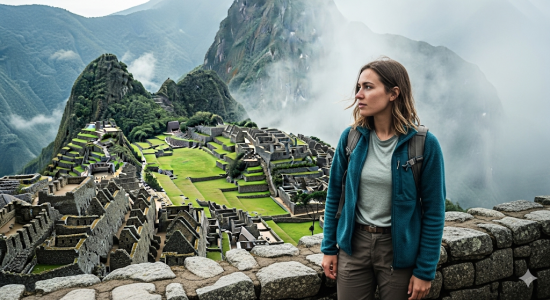There’s a reason why travelers from every corner of the world dream about seeing Machu Picchu. The famous stone city in the clouds is one of those places that doesn’t feel entirely real until you’re actually standing there, staring at the terraces and temples surrounded by misty mountains. It’s an experience that leaves most people speechless. But here’s the thing: to really enjoy it, you can’t just buy a plane ticket and wing it. Cusco and Machu Picchu come with their own unique challenges. If you prepare a little, the whole adventure will feel smoother and much more rewarding. If you don’t, you risk struggling with altitude, weather, and logistics instead of soaking in the magic.
If you prepare a little, the whole adventure will feel smoother and much more rewarding.
Altitude: The First Surprise
The first surprise for most people is the altitude. Cusco sits more than 3,300 meters above sea level, which is much higher than what most of us are used to. The thin air can make you feel strange, almost like your body is moving slower than usual. Locals call the symptoms soroche, and it often comes with headaches, dizziness, shortness of breath, or even nausea.
Not everyone feels it the same way, but it’s smart to expect it. The best cure is simply rest. On your first day in Cusco, avoid running all over the city. Coca tea, which is served everywhere from hotels to small cafés, has been used by locals for centuries to deal with altitude, and many visitors swear by it. Some people also take pills prescribed by their doctor before the trip to help with the adjustment.
What to Pack for Unpredictable Weather
Packing for Cusco and Machu Picchu takes a little more thought than your average vacation. The weather in the Andes changes constantly. One hour you might be in a t-shirt under bright sunshine, and the next you’ll be pulling on a jacket because the temperature drops. Rain can come out of nowhere, even in the dry season. The trick is to pack layers that you can easily put on or take off. A light shirt, a warm sweater, and a waterproof jacket are essential.
Shoes matter a lot too. Cusco’s streets are full of cobblestones, and Machu Picchu requires climbing many steep, uneven steps. Leave the fancy shoes at home and bring comfortable walking shoes or hiking boots. A small daypack is useful for carrying snacks, water, sunscreen, and a hat, but remember that Machu Picchu only allows small bags inside the site.
Tickets and Logistics: Planning Ahead Is Vital
One detail that can make or break your trip is tickets. Machu Picchu has a daily limit on the number of visitors allowed, and during the busy months from May to September, tickets sell out quickly. It’s not like you can just show up at the entrance and buy a ticket on the spot. You need to book well in advance, sometimes months ahead if you want to visit during high season. There are different ticket options too. Some include access to Huayna Picchu or Machu Picchu Mountain, both of which offer incredible views but have very limited slots. On top of the entrance ticket, you also need to figure out how you’ll get there. The train ride itself is beautiful, passing through valleys and along rivers, but it’s not cheap. Booking tickets early usually means better prices and less stress.
Other Treks and Physical Preparation
Other treks, like the Salkantay or Lares routes, are also amazing and sometimes less crowded. These hikes take several days and require both physical preparation and booking with a tour operator. Even if you don’t go on a long trek, remember that Machu Picchu itself involves a lot of walking and climbing. The site is spread across terraces with countless stairs. A little bit of exercise before your trip, like walking or hiking at home, makes the whole experience much more enjoyable.
Cultural Immersion and History
In Cusco, colonial buildings rise on top of old Inca walls, creating a fascinating mix of cultures. The city is also alive with festivals, colorful markets, and traditions that have survived for centuries. Spending a couple of days exploring Cusco adds depth to your trip. Visiting places like Sacsayhuamán, the Sacred Valley, or simply wandering the streets gives you a sense of how important this region was long before tourists arrived. Learning a little about Inca history before your trip makes everything more meaningful. Even picking up a few Quechua words, the language still spoken in the Andes, shows respect to the locals and adds a personal touch to your interactions.
This article serves as a travel guide to help you get started.

